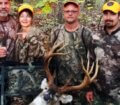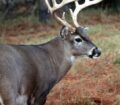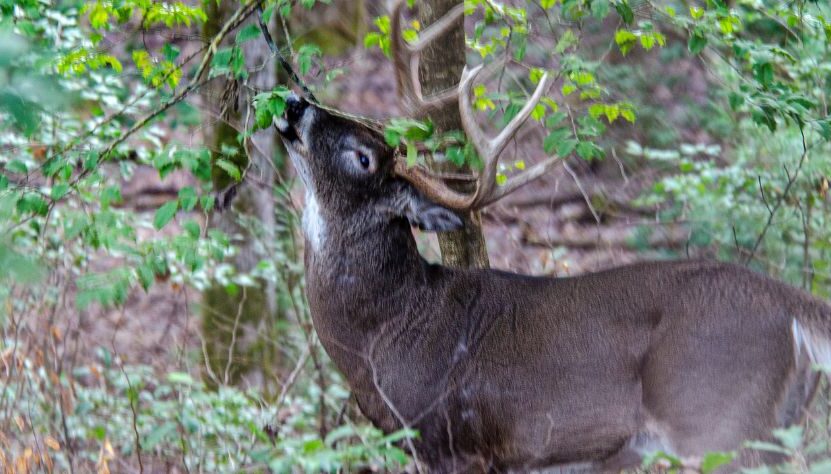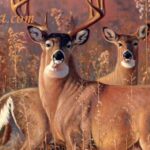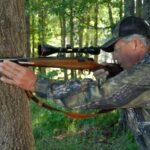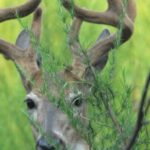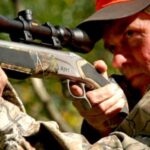Editor’s Note: The only way to eliminate hunting pressure is to reduce the number of hunters who hunt any given piece of property or reduce the number of times each hunter goes onto that land. However, our experts have some creative alternatives to reduce hunter pressure on the land you hunt.

Bob Foulkrod, a longtime northeastern hunter who has hunted all across the U.S., suggests, “If you’re in a hunting club with 20 members, try to reduce that number to 10. Then fewer people will be pressuring and attempting to take the same number of deer.”
Bucks that feel the effects of hunting pressure will hole up where deer hunters aren’t. If you want to take an older trophy buck this season, study an aerial photo or topo map and hunt five or six areas where other hunters never go. These spots may include thickets, islands, a berry patch behind the hunting lodge, the edge of a road leading to the camp, a little shelf off the edge of a cliff, or a thigh-high swamp.
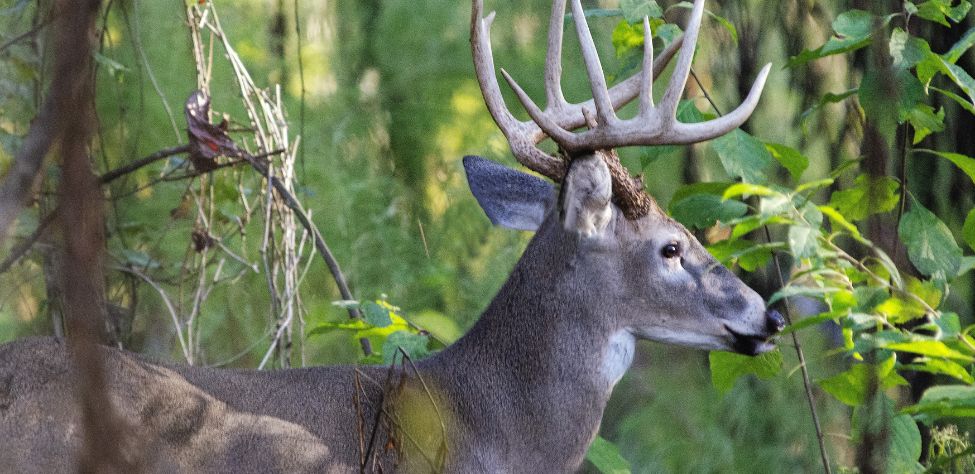
“Once you understand where to hunt, determining the best time to hunt is relatively easy,” Foulkrod says. “The deer know that most hunters hunt from daylight to 10:00 or 11:00 a.m. and from 2:00 p.m. until an hour before dark. The prime time for you to hunt a buck that has dodged all the other hunters may be in the middle of the day and during the last hour of daylight.”
Dr. Keith Causey, a retired deer researcher, relates a story of a colleague who has developed a simple method that has produced bucks for him in high-pressure areas. “My hunting friend lets everyone on the lease he hunts decide where they prefer to hunt each morning. After everyone else has picked out the ‘good places,’ he goes to the worst hunting spots left on the land. But often, he bags better bucks in these areas because these animals aren’t receiving much hunting pressure.”

Dr. Robert Sheppard, a longtime student of the science of hunting deer, believes the best time to hunt a high-pressure buck is the last week of the season. “Before bow season, I go to thickets and cut shooting lanes, 2- to 3-feet wide and 10- to 25-yards long inside each thicket. Then, in the last week of the season, I move into these thickets with a favorable wind and watch the shooting lanes. By the end of the season, the older-age-class bucks must be in the thickets to survive. If they’re in those thickets, sooner or later, they have to cross shooting lanes. When they do, I bag them.”
Midwestern hunter Brad Harris tries to pattern hunters to take older-age-class bucks. “By the end of the season, I’ll usually know where and when people are hunting. Then I get in the woods before the hunters arrive and stay there until after they leave. This way, I’m using hunter pressure to move deer to me so that I can get a shot.”

How to Hunt and Take Big Buck Deer on Small Properties
In this book, you’ll hear from 14 hunters who either have gained permission or leased properties as small as six acres to as much as 250 acres, and how they consistently take older-age-class bucks off these little lands.
VERSIONS: AUDIBLE, KINDLE & PRINT

Jim Crumley’s Secrets of Bowhunting Deer
Using a black magic marker and a gray work jumpsuit, Jim Crumley of Buchanan, Virginia, drastically changed the nature and purpose of hunting camouflage when he created the first sportsman’s camouflage – Trebark. Crumley’s love of bowhunting and his desire to be more invisible changed hunting clothing forever.
In this hunting guide, he shares the wisdom that he’s learned throughout his lifetime about how to be a hunter, how to find a deer lease, how to scout for deer, and more.
Special features include how to:
- Have a magic 60 acres to hunt
- Decide the best equipment to use
- Find deer year-round
- Locate land to hunt
- Know the best place to put your tree stand
- Get bucks within bow range
VERSIONS: AUDIBLE, KINDLE & PRINT

How to Hunt Deer Like a Pro
How do you know if the land you hunt has a trophy deer on it? Wildlife manager Bob Zaiglin, of Uvalde, Texas and Jim Crumley, the father of modern-day hunting camouflage, tells you how to find out. GPS can make finding and taking that trophy buck easier. This hunting guide will teach you how to hunt big bucks where no one else can find them, how to call deer, and how to become versatile as a deer hunter, so that if one deer tactic doesn’t work, another one will.
In the chapter, “How to find Bucks at Scrape,” Dr. Keith Causey, retired professor of Wildlife Science at Auburn University, describes the best way to hunt a scrape.
Brad Harrison of Neosho, Missouri, is a nationally-known videographer, professional deer hunter and master at calling deer. Another master is Will Primos of Primos Game Calls. These two experts will tell the best deer calls and when to use them in this book.
And for over 20 years, Bo Pitman, lodge manager of White Oak Plantation, has been studying deer movement patterns. He explains what types of conditions are best for predicting deer movement.
VERSIONS: AUDIBLE, KINDLE & PRINT

Deer hunting and deer hunters are drastically changing each year. To learn new techniques for hunting deer and have more places to hunt, I’ve interviewed some of the best deer hunters in the nation and share their tactics in How to Hunt Deer Like a Pro: Volume II.
In Chapter 10, Jacob Lamar tells you his tactics for consistently taking older-age-class bucks on public lands in several states. Chapter 11, Bob Walker explains how to find places on public lands where you can hunt that 99 percent of the other hunters never have considered hunting. The Bonus Chapter with David Ramey tells you how, where, when and with what equipment to take big Kansas bucks on public lands by hunting in 100-degree weather when others won’t hunt.
Chapter 13, Mark Drury, his family and his guests take mature bucks every season by having more small places to hunt rather than one large property. Drury explains the strategy of having satellite farms to hunt that only may be 50-150 acres each or less. Chapter 15, Pat Reeve, who hunts far-northern states and Canada, says, “I don’t like hunting for mature bucks until the weather is 20 degrees or less.” Chapter 4, Dr. Larry Marchinton says that funnels are the most-reliable stand sites to hunt for big bucks and tells why.
VERSIONS: AUDIBLE & PRINT

